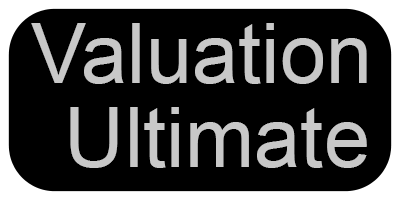
There are many ways to value an accounting firm because after all, an accounting firm is still just a business and businesses get their value by generating expected benefits to their owners. There are 4 common methods used to value accounting firms in Australia, USA and most other countries being:
- Capitalization of Earnings
- Rule of Thumb
- Comparable Transactions
- Discounted Cash Flow
We have created a full working demo of a valuation of a typical accounting firm where all 4 of these methods are applied and a weighted-average outcome is adopted. The demo is fully interactive and you can change any of the calculations and assumptions on the fly and watch the values and the full report dynamically update as you go. You can access the live free demo business valuation now. You can use the Valuation Ultimate software to value any business in any industry.
Remember that business valuations are a simulation not a just calculation. The aim of a valuation is to simulate the process buyers and seller would go through in the real world to investigate the business, understand its likely future cash flows and risks. Each business valuation method may have different calculations but the goal is the same.
Depending on the size of the accounting firm, it may have different risks on the transition to a new owner. Smaller firms are more likely to have a tougher transition as the business often relies on the personal relationships of the owner. Larger accounting firms don’t rely so much on a single person but have other risks due to the complexity of the business.
Smaller firms are often valued based on the rule of thumb method using annualized recurring revenue or a similar revenue measure multiplied by a cents in the dollar rate, typically somewhere between $0.70 and $1.30 for each dollar of revenue. The reason why the bottom line profit is not often used as the key measure is because smaller accounting firms are more likely to be a bolt-on acquisition and the purchaser won’t necessarily need all of the overheads post-acquisition. Larger firms are less likely to be valued based on the rule of thumb method as purchasers are more likely to need all of the overheads to continue to operate the firm and therefore pay more attention to the bottom line.
A rule of thumb is a self-fulfilling prophecy and doesn’t necessarily need to make rational financial sense in isolation, it’s just what the market has typically done in the past and is likely to do in the future. The cents in the dollar multiple is always negotiated but there is some science behind it in that better firms will achieve a better multiple because the risks are lower to the purchaser and/or the profitability upside is higher.
Even if a rule of thumb method is the primary valuation method considered it is strongly recommended that other methods are also utilized at least for a cross-check. A capitalized earnings method is often used based on normalized EBIT with an enterprise value multiple of between 3-5 depending on the risks.
If actual comparable transactions are available then obviously that method should also be used but care must be taken to ensure the businesses are actually comparable in all material features.
If the accounting firm is quickly growing or otherwise changing in a material way, then a discounted cash flow method should be considered as this method can directly allow for the expected ups and/or downs in the future cash flows.
Just remember that the calculation is just a means to an end, it is not the valuation. The valuation is your ultimate opinion on what buyers and sellers would agree the business is worth or at least a value that they can both live with in the current market.
Want to go deep into valuation theory and hear personal stories from valuation experts, listen to our business valuation podcast.
